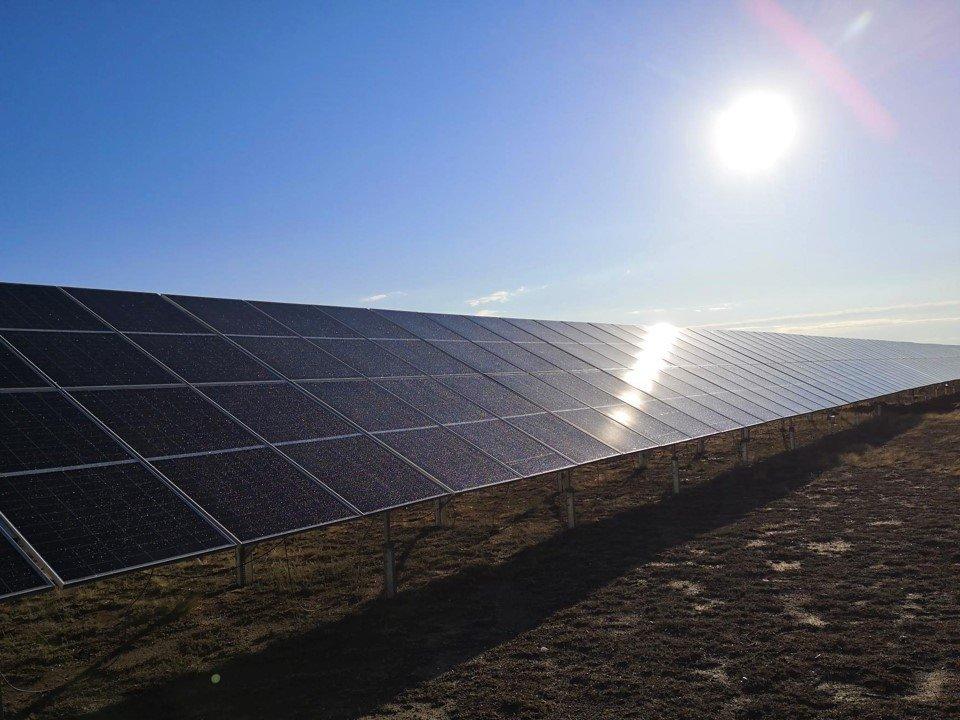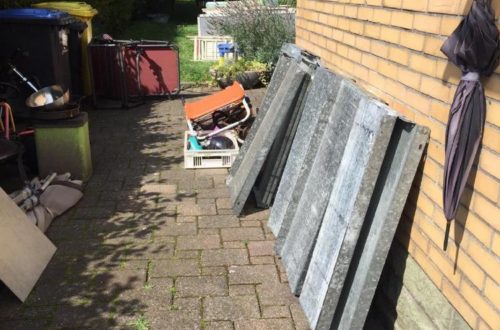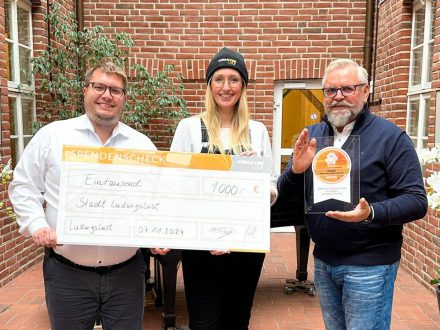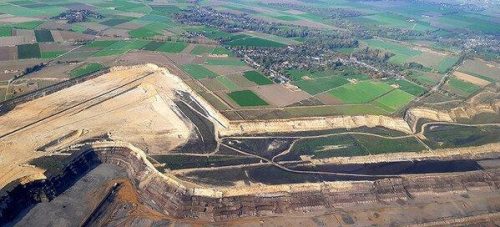
Bifacial modules: A test project for the future of technology
Even the ancient Egyptians recognized the enormous potential of the sun and, for example, aligned their doors so that the hot midday sun did not heat the living space additionally. Today, thanks to the technical developments of modern times, solar radiation is now being used specifically to generate electricity and heat, and is thus intended to offer an alternative to environmentally harmful and risky energy generation methods. The French physicist Henry Becquerel laid the foundation for the technology known today as solar technology almost 200 years ago. Technical progress has led to the silicon solar cells we know today, which are used to generate solar power and can now be found on numerous roof surfaces. GOLDBECK SOLAR also uses the modules for its numerous solar projects around the world. During the expansion of the project in Akadyr, Kazakhstan, the EPC company took the opportunity to test double-sided modules.
Akadyr solar park with 76 MW
Kazakhstan is a popular country for solar projects due to its vegetation and climate conditions. The Power Plant Akadyr was therefore not the first project in Kazakhstan for GOLDBECK SOLAR. The photovoltaics expert already carried out the construction of the biggest solar plant in Central Asia, constructed in Karaganda , with a capacity of 100 MWp in 2018. After that, the first phase of Akadyr with a capacity of 50 MW was built and commissioned in 2019. With the award of the contract for the second construction phase, GOLDBECK also took over the extension of the solar power plant located in the Karaganda region of Kazakhstan by a further 26 MW. The project extension was completed in June 2020 so that the entire Akadyr plant now has a total capacity of 76 MW. The technical specifications for the second construction phase were optimised for the use of bifacial modules to turn this photovoltaic plant also in a test facility that will be able to proof the efficiency of the bifacial modules. Over the next years, the analysis will provide sound information for the future development of the technology.
Lack of experience with bifacial modules
Bifacial solar cells are tested frequently with the intention to obtain a better efficiency from solar modules. This is because, the double-sided modules are intended to absorb light on both the front and the back sides. This increases the efficiency in several ways. On the one hand, the bifacial cells can capture direct sunlight at the front, as well as indirect radiation at the back. Specially if the back has in front diffusely reflecting backgrounds such as light sand or snow. On the other hand, with stationary elements, the wandering solar radiation can be used throughout the day. This results in a more effective and higher energy yield from the solar modules.
Although double-sided modules have been on the rise for a good year now, demand is still relatively weak, especially in Europe. This is due to the fact, that experience with this new technology is still lacking in many cases and there are often no application examples. In addition, experts have still not been able to agree on standardized data and test procedures to create a uniform basis for all. Planners can therefore rely almost exclusively on manufacturers‘ performance forecasts. On the other hand, there is still no real comparability between projects that have already been carried out and the actual economic viability is still questionable.
However, greater interest in the bifacial modules already exists in individual regions of the Middle East and in Asia. This is mainly since in these regions large open space plants are being built in desert-like regions. The project in Akadyr is one of these.
Creating greater comparability
The geographical and climatic conditions in Akadyr were ideal for GOLDBECK SOLAR to test this type of module. The German-based EPC company is also pursuing the goal of achieving a better basis and greater comparability of bifacial solar cells and standard modules through the test facility in Akadyr. Thus, GOLDBECK SOLAR would like to push the further development in the solar industry already now.
Within the framework of the Akadyr project, the use of the bifacial solar cells and the installation of six 630 kVA inverters did not result in any changes in the configuration from an electrical point of view, but the angle and height of the substructure differed due to its alignment with the bifacial modules.
The configuration of the inverters was as follows:
Inverter no. 1: 1530 module / 435 Wp / standard monocrystalline / 30° / 0.8m ground clearance
Inverter no. 2: 1530 modules / 435 Wp / bifacial monocrystalline / 30° / 0.8m ground clearance
Inverter no. 3: 1530 module / 435 Wp / standard monocrystalline / 30° / 1.2m ground clearance
Inverter no. 4: 1530 modules / 435 Wp / bifacial monocrystalline / 30° / 1.2m ground clearance
Inverter no. 5: 1530 module / 435 Wp / standard monocrystalline / 25° / 0.8m ground clearance
Inverter no. 6: 1530 modules / 435 Wp / bifacial monocrystalline / 25° / 0.8m ground clearance
The different tilt angles and heights are primarily intended to answer the question of how these affect the efficiency of the modules and where the optimum lies. In the long term, this also allows better statements to be made about performance, which up to now have often only been based on manufacturers‘ forecasts.
Well thought-out floor structure
For the ground-mounted structure, the project managers focused on creating a system design that would maximize bifacial gains. To achieve this, the shading effects on the back of the modules were to be avoided. The Sigma IIST Bifacial Fixed Tilt System from Mounting Systems was exactly the right solution to meet these requirements. This is because it is extremely adaptable and thus enables a completely customer-specific design.
Especially for the Akadyr project, this meant that the system’s tilt angle and ground clearance were set high. This allowed the system to adapt to the local environment and to maximize the bifacial benefit of the vertically arranged modules. The horizontal rails were placed along the half-cut module junction box spaces in such a way that shading on the back of the modules could be avoided.
Due to the different substructure configurations in the test area, which are mounted with both standard and bifacial modules, it was subsequently possible to carry out a direct performance comparison. In this way it was possible to calculate the exact gain of the bifacial cells and the effect of ground clearance and angle on the solar energy yield.
Extensive data collection
In addition, each area shall have secondary class pyranometers, which measure not only the direct light on the front side but also the diffuse light on the back side to obtain data on irradiation and diffuse light. The information thus obtained can then be put into context with the measured energy production. The rear pyranometers are positioned in the middle of each row of modules so that they also measure the difference in light intensity on the upper and lower rows of the system.
In the end, the various measurements will make it possible to obtain all the necessary data to make a sound assessment of the success of the test project. However, it will not be possible to completely reduce all uncertainties with simple monitoring instruments. One example is the shading of the lower row. When comparing the light measured on the back of the modules and the output of the front area, a higher gain can be expected in the upper rows, because more diffuse light could reach the higher modules, while the rest is shadowed. Based on the final measurement data, GOLDBECK SOLAR will be able to make technical improvements to the installation so that such losses are reduced to a minimum.
Challenges mastered
With the test project in Akadyr, GOLDBECK SOLAR wants to create a solid evaluation basis for the future use of bifacial modules in various conditions. The solar plant in the Karaganda region of Kazakhstan is well suited to this purpose, as the very low vegetation in summer does not massively change the albedo. At the same time, the winter with almost five months of constant snow allows a detailed analysis of the effect of the albedo on the profit that the bifacial modules offer compared to standard modules.
Nevertheless, there is an additional challenge for the project in Akadyr. With temperature fluctuations from -50°C to +50°C, the climate is a major factor that had to be taken into account during the planning and installation of the system. To tackle this problem, a specially designed thermal expansion joint was installed within the substructure. In this way the steel parts and rails have sufficient space and flexibility to avoid any damage to the components and to ensure bifacility.
Currently a unique project
With Power Plant Akadyr, GOLDBECK SOLAR has created a unique opportunity to compare the performance of single and double-sided modules at different angles of inclination and clear heights on an individual inverter basis. This is because the solar power plant is currently the only known system of this size that can do exactly this. In a year’s time, it will be possible to achieve initial comparative results, considering the parameters relating to temperature and environmental conditions in Kazakhstan in summer and winter.
GOLDBECK SOLAR thus wants to live up to its claim of being the best solar supplier in Europe. To this end, the company is constantly investing in technical analyses of the various components used in its own solar systems, so that it can also offer its customers the best possible technical solutions based on real analysis and research over 20 years. The plant in Akadyr is just one of many projects that the solar expert has already carried out over the past two decades. However, testing the bifacial modules at the Akadyr site makes the project certainly one of the most exciting.
Learn more about GOLDBECK SOLAR at www.goldbecksolar.com.
GOLDBECK SOLAR GmbH
Goldbeckstr. 7
69493 Hirschberg an der Bergstraße
Telefon: +49 (6201) 7103 300
Telefax: +49 (6201) 7103 499
http://goldbecksolar.com
Marketing
Telefon: +49 (6201) 7103337
E-Mail: yesica.pantiga@goldbecksolar.com
![]()




